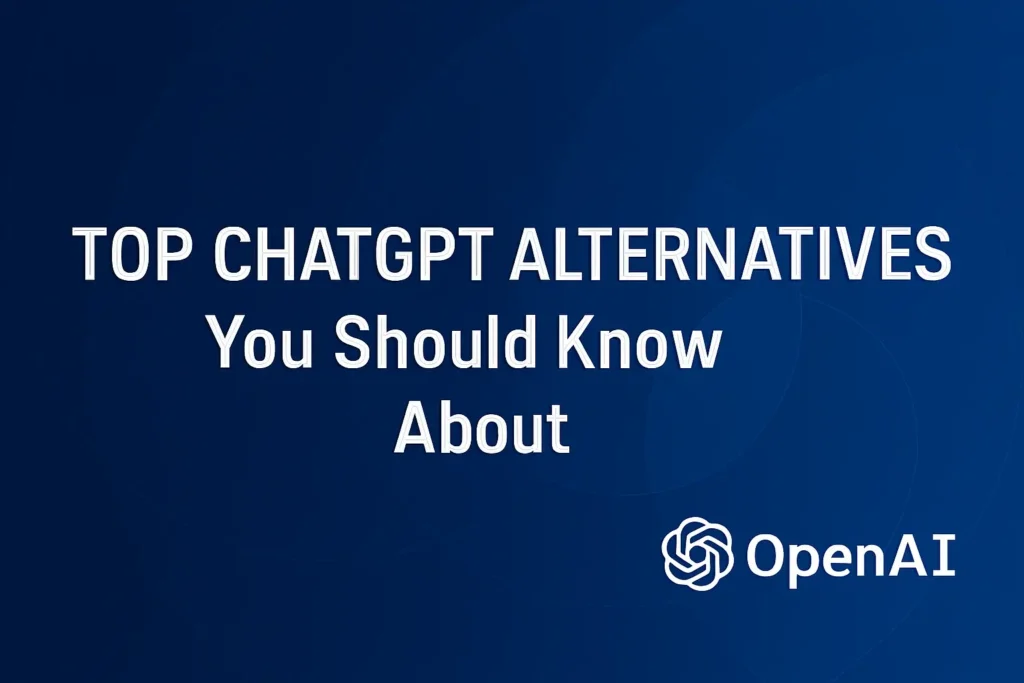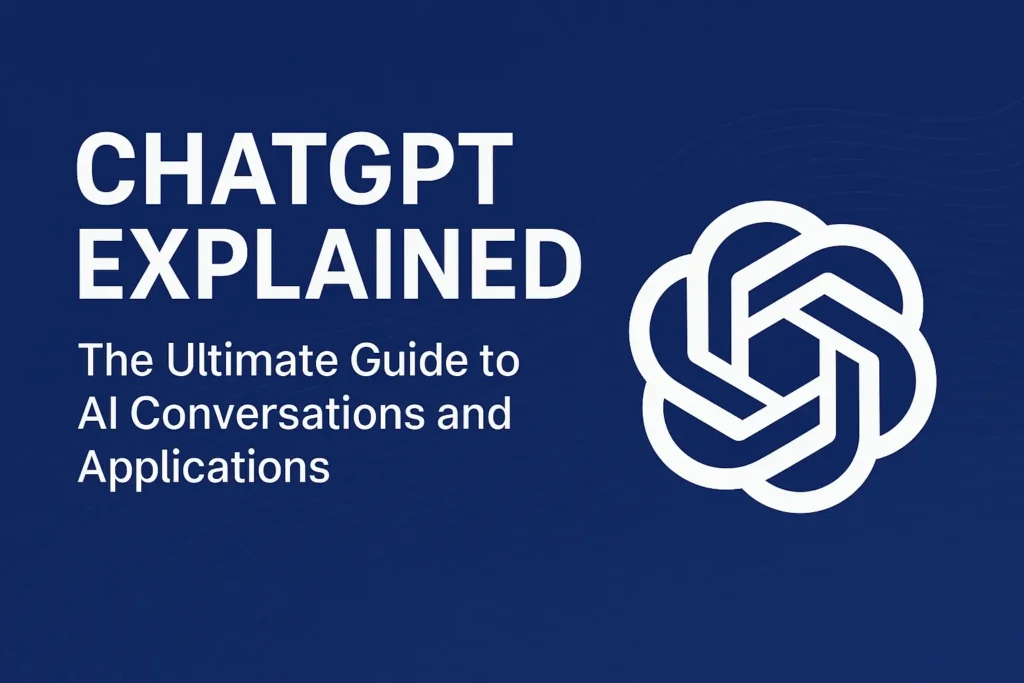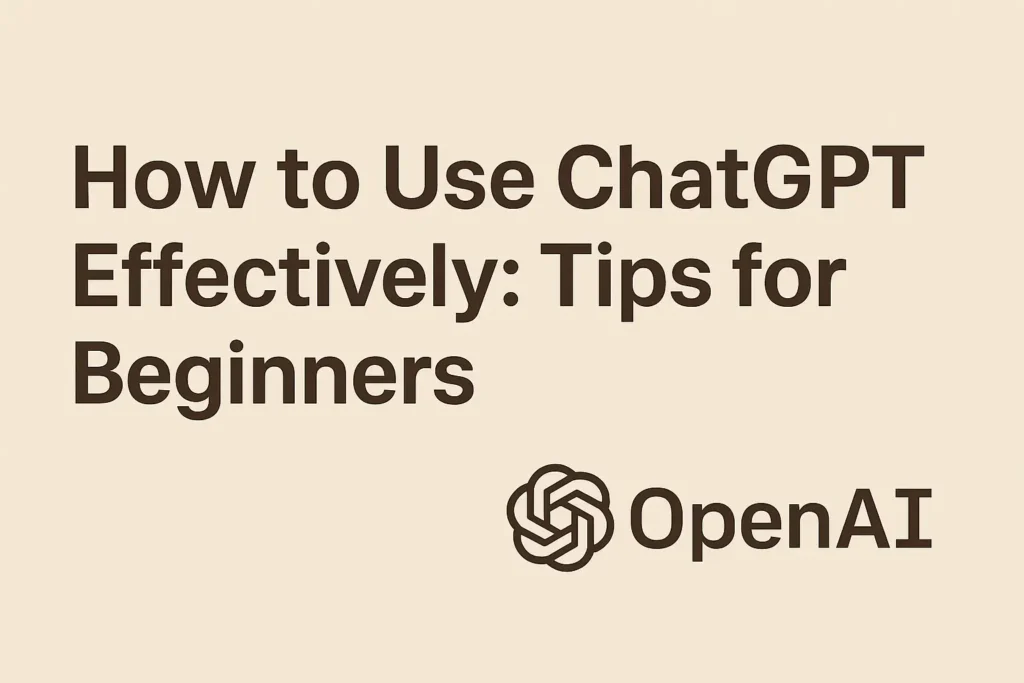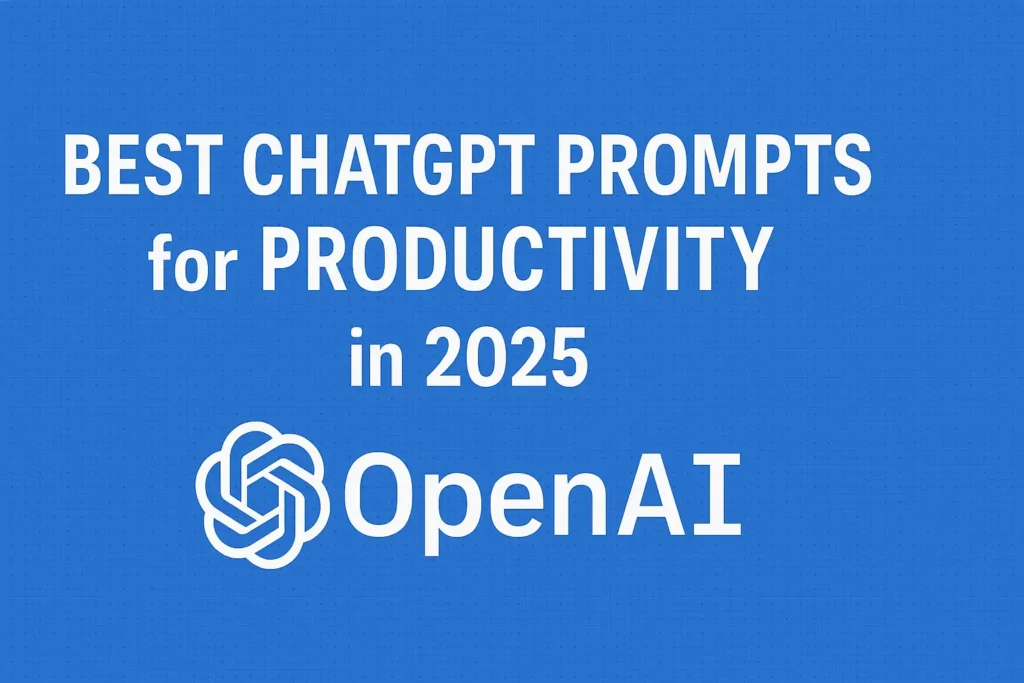ChatGPT remains one of the most recognizable AI assistants, but the AI landscape is crowded and evolving fast. Whether you need stronger privacy controls, deeper integrations with Google or Microsoft apps, open models you can host yourself, or tools built for specific business functions, several capable alternatives deserve attention. Below is a practical guide to the leading ChatGPT alternatives in 2025, what each one does best, and how to choose the right option for your needs.

ChatGPT Alternatives
1. Anthropic Claude — the professional, safety-focused choice
Anthropic’s Claude models are built with a heavy emphasis on safety, reasoning, and enterprise readiness. Claude often performs very well on complex reasoning benchmarks and is designed to produce helpful, less risky outputs for professional workflows. Enterprises that want clearer guardrails and stronger alignment controls often choose Claude for sensitive or regulated work.
Best for: teams that need high-quality reasoning and safety controls.
Strengths: strong reasoning, tuned refusal behavior, enterprise features.
Considerations: commercial licensing and pricing for high-volume use.
2. Google Gemini — best for Google ecosystem integration
Google’s Gemini (the successor to Bard) is tightly integrated into Google Search, Workspace, and Android. That makes it especially useful if your workflows depend on Google Docs, Gmail, Drive, or real-time web access. Gemini’s multimodal capabilities and real-time search access give it an edge for tasks that require up-to-date information and deep Google product integrations.
Best for: users already invested in Google Workspace or who need web-connected answers.
Strengths: live search, multimodal inputs, deep product integration.
Considerations: privacy and data residency policies vary; check Google terms for enterprise use.
3. Microsoft Copilot / Microsoft AI — best for Windows and Office users
Microsoft has integrated powerful LLMs across Windows, Office, Teams, and Azure under the Copilot umbrella. If your organization runs on Microsoft 365, Copilot can automate meeting summaries, draft documents, and generate slides directly inside familiar apps. Microsoft is also investing in its own AI models and infrastructure, giving it flexibility for both cloud and on-premises enterprise deployments.
Best for: enterprises that live in the Microsoft ecosystem.
Strengths: seamless Office integration, enterprise deployment options, productivity features.
Considerations: pricing and feature tiers vary; administrators should review compliance settings.
4. Meta Llama family — best open models for customization and hosting
Meta’s Llama models are notable for their openness and broad availability through cloud partners such as AWS Bedrock and other platforms. For companies that want to self-host, fine-tune, or run inference close to their data, Llama models offer a flexible alternative to closed-source offerings. Meta continues to iterate rapidly on capability and model sizes.
Best for: teams that need open models, on-prem hosting, or deep customization.
Strengths: openness, availability across cloud providers, strong performance on many tasks.
Considerations: you may need engineering resources to fine-tune and deploy.
5. Cohere Command A and similar specialized models — best for tool use and API-first workflows
Cohere’s Command family emphasizes real-world tool use, structured responses, and integrating models with search, databases, or APIs. Command A models are designed to be strong at tool use and can be configured for high-context tasks or enterprise workflows. If you build AI into products or pipelines, Cohere’s models and tooling are worth evaluating.
Best for: product teams building AI-native features and tool integrations.
Strengths: tool use, long context windows, developer-friendly APIs.
Considerations: plan for hosting and scaling costs if using high-context setups.
6. Perplexity, DeepSeek and search-first assistants — best for research and web answers
Search-first assistants such as Perplexity focus on web-sourced answers, citations, and quick research workflows. These tools are tuned to produce concise summaries with source links, which makes them handy for discovery, quick briefs, and research tasks that require traceable evidence. Variants like DeepSeek focus on reasoning and may be offered under different terms.
Best for: researchers, journalists, and anyone who needs cited web results.
Strengths: source-aware outputs, quick summarization, up-to-date web access.
Considerations: quality depends on retrieval pipeline and source quality.
7. Jasper and vertical AI platforms — best for marketing and content teams
Platforms such as Jasper have built vertical feature sets on top of LLMs to accelerate marketing workflows. They provide templates, brand voice controls, collaboration tools, and integrations tailored for content teams. If your main use case is copywriting, social, and campaign generation, a marketing-first AI may save time compared with a general-purpose assistant.
Best for: marketing teams that want ready-made templates and brand controls.
Strengths: workflow templates, content velocity, team features.
Considerations: may lack deep reasoning or multimodal features found in general LLMs.
Read: ChatGPT Explained: The Ultimate Guide to OpenAI’s Conversational AI
How to choose the right alternative
- Match the tool to your ecosystem. If you live in Google Workspace, try Gemini. If Microsoft is central, Copilot is often the smoothest fit.
- Decide on openness vs managed service. Open models such as Llama give control and cost benefits for scale, while managed services remove operational overhead.
- Prioritize safety and compliance. For regulated industries, evaluate model safety features, data handling, and auditability. Claude and enterprise Copilot offerings are often positioned for such use cases.
- Test real tasks. Run proofs of concept with real prompts and documents. Performance can vary dramatically by prompt, model size, and integration.
- Consider total cost of ownership. Look beyond sticker price to include integration, hosting, and developer effort.
Closing thoughts
There is no single one-size-fits-all replacement for ChatGPT. The right alternative depends on your technical capacity, privacy needs, existing software stack, and the nature of the tasks you want to automate. Anthropic Claude, Google Gemini, Microsoft Copilot, Meta Llama, Cohere Command, Perplexity, and Jasper represent the range of choices available in 2025—from safety-first enterprise models and deeply integrated assistants to open-source engines and vertical SaaS solutions. Evaluate them with hands-on tests against your real workflows, and design your adoption strategy around data governance and human oversight.



